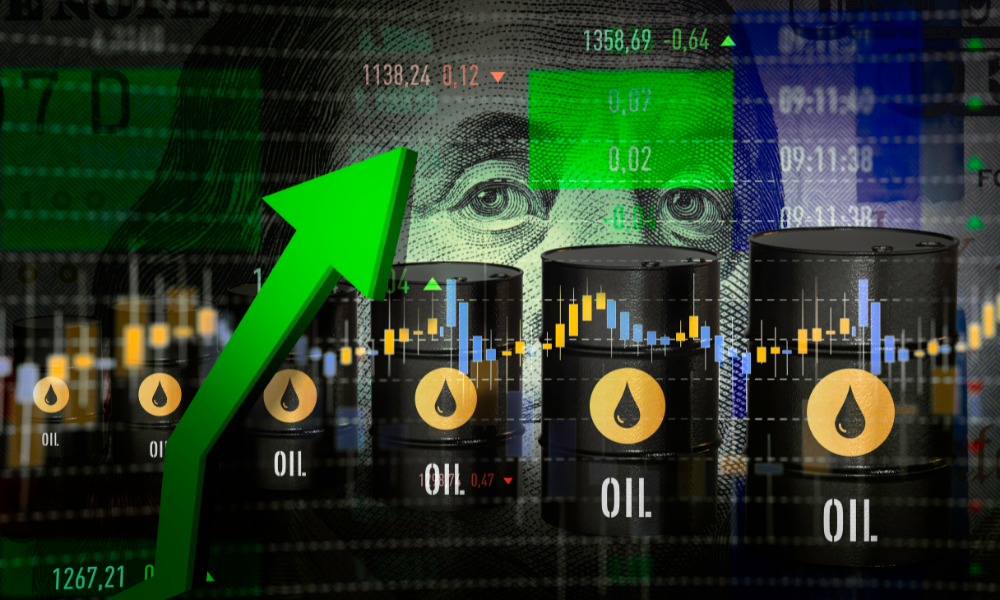
Oil prices have soared more than 10% and are closing in on their all-time high levels after the risk of a US and European ban on Russian crude threatened a stagflationary shock for world markets.
The global benchmark of Brent crude hit US$139.13 a barrel at the start of trading on Monday, a leap of more than $20 on Friday’s close of $118.03.
The all-time of $147.50 was reached in July 2008 but some analysts think that mark could be surpassed because of the geopolitical impact of the Ukraine crisis.
Stock markets headed the opposite way with more big losses when trading began on Monday. The Nikkei in Tokyo was down more than 3%, as was the Hang Seng in Hong Kong. In futures trade, the FTSE100 off 2.6% and the S&P500 down 1.3%.
The panic on trading floors sent safe havens sharply higher, with gold hitting as much as $2,000.86, its highest since mid-2020.
Although the oil price slipped back to $130 after the initial surge, consumers still face higher household energy and petrol costs, while inflation will rise across the board if businesses are forced to pass on higher fuel expenses.
The price of natural gas is closely linked to crude oil and is sure to lift again. Gas prices set a new record high mark on Friday in the UK, for example, when the national balancing point (NBP) benchmark soared above 500p a therm.
Having climbed 21% last week, Brent crude was further energized by the risk of a ban of Russian oil by the US and Europe. Mohamed El-Erian, the chief economist at the insurer Allianz, said that it appeared likely that the new sanctions would be imposed given the continued bombardment of Ukrainian cities.
“It’s hard to see such sanctions not being imposed given the atrocities being committed against Ukraine,” he said on Twitter.
Bank of America chief economist Ethan Harris said cutting off most of Russia’s energy exports would be a “major shock to global markets”, adding that the loss of Russia’s 5m barrels could see oil prices double to $200 a barrel.
Mike Muller, of commodity trading firm Vitol, also said prices could rise further. “I don’t think we’ve priced in everything yet,” he said.
Commodity prices in general are having their strongest start to any year since 1915, Bank of America said. Among the many movers last week, nickel rose 19%, aluminum 15%, zinc 12%, and copper 8%, while wheat futures surged 60%, and corn 15%.
That will only add to the global inflationary pulse with US consumer price data this week expected to show annual growth at a stratospheric 7.9%, and the core measure at 6.4%.
It leaves a tough decision for the European Central Bank when it meets this week against a backdrop of a sharply falling euro. The nightmare scenario of stagflation – where inflation combines with stagnating growth – looms for the world economy.
| Revealed In 2022 Best Day Trading Strategies for Beginners |
“Given the potential for stagflation is very real, the ECB is likely to maintain maximum flexibility with its [quantitative easing] program at €20bn through the second quarter and potentially beyond, thus effectively pushing out the timing of rate hikes,” said Tapas Strickland, an economist at NAB.
“Higher inflation forecasts, though, mean rate hikes will be needed on the horizon.”
With the outlook for European growth darkening, the single currency took a beating and fell 3% last week to its lowest since mid-2020. It was last down 0.6% at $1.0864 and risked testing its 2020 trough of about $1.0635. It has also lost a lot of ground against the pound, which now buys €1.214.
The dollar was broadly firmer, supported in part by a strong payrolls report which only reaffirmed market expectations for a rate hike from the Federal Reserve this month.
Related Article
Decentralized Finance On Cardano
With Records Broken Daily, How High Can They Go?
14 Business Leaders Share Their Predictions For Consumer Behavior In 2022
The dollar index was last at 98.812 having climbed 2.3% last week. Gold benefited from its status as one of the oldest safe harbors and was last up 0.7% at $1,983 an ounce. Source: The Guardian